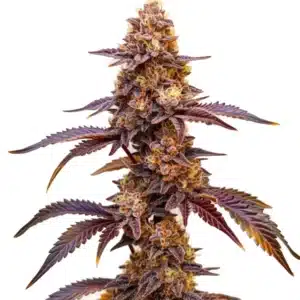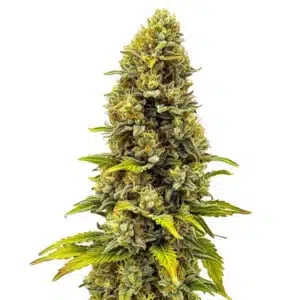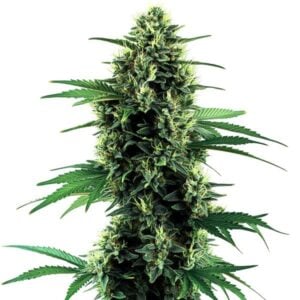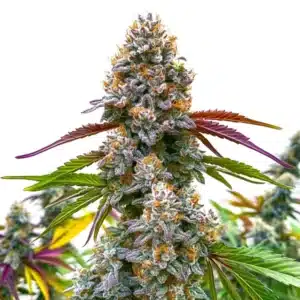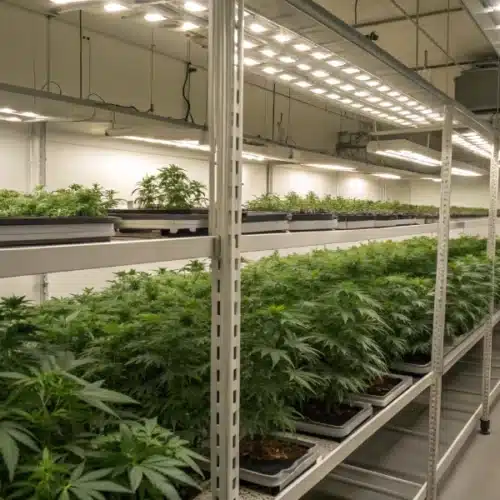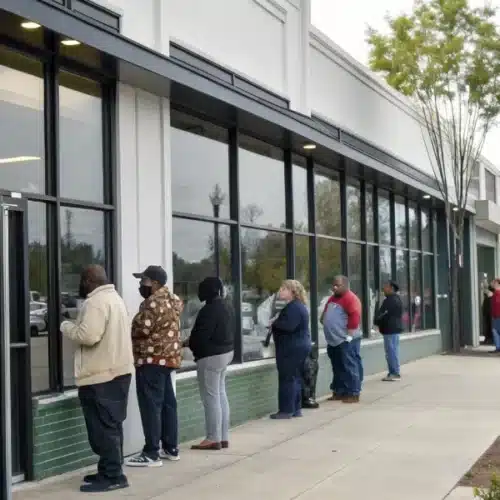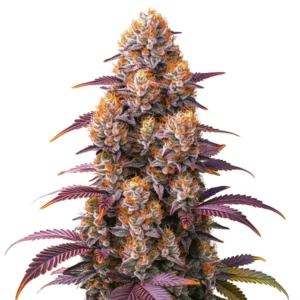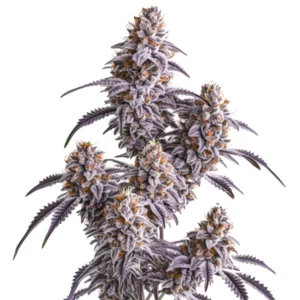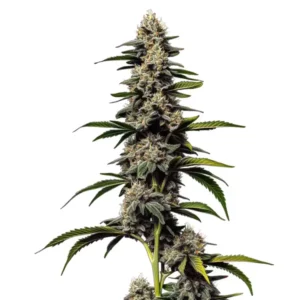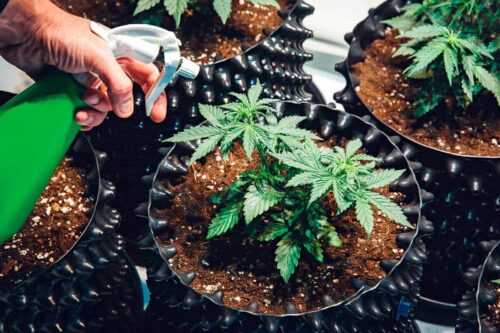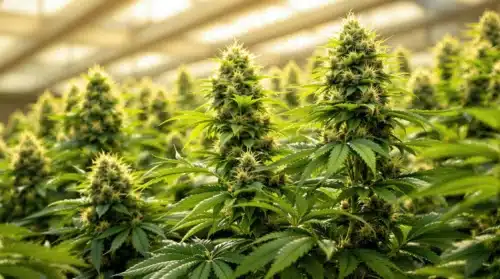Growing cannabis indoors requires careful attention to various factors, including temperature, light, ventilation, and humidity. One of the key components often overlooked is humidity control. Maintaining the proper humidity levels in your grow room can make a significant difference in the health and yield of your cannabis plants. For that reason, having a reliable dehumidifier in your grow space is crucial.
Humidity levels in a grow room fluctuate due to various factors, such as the number of plants, the amount of water used during watering sessions, and changes in temperature. Without proper management, these fluctuations can lead to less-than-ideal growing conditions. A dehumidifier stabilizes these levels, ensuring a consistent environment where cannabis plants can thrive throughout their growth cycle.
Additionally, managing humidity is vital when cultivating cannabis indoors, as this environment can create challenges different from those experienced outdoors. Indoors, the grower must replicate nature’s balance artificially, which includes not only light and water but also the right humidity. A properly managed indoor climate, made possible by a dehumidifier, minimizes stress on the plants, promotes better growth, and ultimately leads to higher yields of quality cannabis buds.
Why You Need a Dehumidifier in Your Grow Room
Cannabis plants thrive in a carefully balanced environment, and humidity plays a significant role in plant health. Too much humidity can create conditions that promote mold, mildew, and pests, while too little can stress the plants and hinder growth. Here are the reasons why a dehumidifier is essential for your grow room:
Preventing Mold and Mildew
High humidity levels can lead to the growth of mold and mildew, particularly during the flowering stage. These fungi can cause significant damage to cannabis plants and reduce the quality of your buds. Mold spores spread rapidly in damp environments, and once they take hold, it’s difficult to get rid of them without sacrificing your plants. A dehumidifier can help keep humidity levels low enough to prevent these problems.
Even a small amount of mold in a grow room can be detrimental. Once spores land on cannabis flowers, they begin to reproduce and multiply, turning what could have been a high-quality yield into unusable product. Regular monitoring of humidity, along with the strategic use of a dehumidifier, is key to keeping mold and mildew at bay. The initial investment in a dehumidifier quickly pays off by protecting your plants from these costly invaders.
Moreover, mold not only affects the health of your plants but also poses risks to consumers if it goes unnoticed. Moldy buds can be harmful to those who use them, as inhaling mold spores can cause respiratory problems. A dehumidifier, therefore, plays a dual role in both improving the quality of the cannabis and ensuring it is safe for consumption.
Protecting Your Plants from Pests
Excessive humidity creates a breeding ground for pests such as spider mites and whiteflies, which can be harmful to your cannabis plants. These pests thrive in warm, moist conditions and can cause significant damage to the leaves, stems, and buds of your plants. By controlling humidity, you reduce the likelihood of a pest infestation.
Beyond simply reducing humidity, dehumidifiers help create an environment that is unfavorable for these pests to reproduce and spread. Many pests prefer moist conditions to lay their eggs and propagate, so by maintaining lower humidity levels, you are actively disrupting their life cycle. This not only helps protect your current crop but also reduces the chances of long-term infestations that can carry over to future grow cycles.
Additionally, many growers use integrated pest management (IPM) techniques, combining dehumidifiers with other preventative measures such as beneficial insects or biological controls. The dehumidifier acts as a core component of this strategy, creating an environment where pests struggle to thrive, while other defenses handle any that manage to breach the grow room. The end result is healthier plants with less reliance on chemical pesticides.
Improving Airflow and Ventilation
While ventilation systems help circulate air within your grow room, a dehumidifier specifically targets moisture in the air. This makes it easier for your ventilation system to maintain optimal conditions. A dehumidifier helps balance the moisture levels, allowing your plants to breathe better and reducing the overall strain on your ventilation equipment.
When the air is too humid, even the best ventilation systems can struggle to keep up, as excess moisture places added pressure on air filters, fans, and ducts. By removing moisture from the air, a dehumidifier works in tandem with your ventilation setup, ensuring that airflow remains steady and your plants receive fresh, dry air that promotes healthy growth.
Furthermore, improved airflow leads to better CO2 absorption for the plants, which is critical for photosynthesis. When humidity levels are too high, the stomata (tiny pores on the leaves) can close, limiting the plant’s ability to absorb CO2. A dehumidifier keeps these levels in check, allowing plants to perform essential biological functions more effectively, leading to stronger, healthier growth.
Promos & Deals
Choosing the Right Dehumidifier for Your Grow Room
Selecting the right dehumidifier is important for keeping your grow room at optimal humidity levels. Here are a few factors to consider when choosing a dehumidifier for your cannabis setup:

Room Size and Capacity
The size of your grow room will determine the capacity of the dehumidifier you need. Dehumidifiers are rated by their moisture removal capacity, typically measured in pints per day. A small grow tent might only require a dehumidifier capable of removing 20-30 pints per day, while a larger grow room may need a unit that can handle 50 pints or more. It’s important to choose a dehumidifier with the right capacity for your space to ensure effective humidity control.
If the dehumidifier is too small for your space, it will run continuously without effectively lowering the humidity, leading to higher energy costs and potential damage to your plants. Conversely, a dehumidifier that’s too large can dry out the air too quickly, creating a different set of problems. This is why sizing your dehumidifier properly is one of the most critical steps in setting up a controlled environment for your cannabis plants.
Moreover, considering future expansion is wise when choosing a dehumidifier. If you plan to increase the size of your grow room or add more plants, you may want to invest in a dehumidifier with a higher capacity to accommodate these changes. This will save you from having to purchase a new unit later on, making it a cost-effective choice for long-term growers.
Energy Efficiency
Dehumidifiers can be energy-intensive, especially when running for long periods. Energy efficiency is a key factor to consider when selecting a dehumidifier for your grow room. Look for units that are Energy Star rated or have low energy consumption to minimize the impact on your electricity bill.
An energy-efficient dehumidifier not only reduces your operating costs but also contributes to a more sustainable grow operation. In large-scale setups, the electricity usage of lights, fans, and dehumidifiers adds up quickly, so any energy savings can significantly impact the overall cost of production. Opting for a more efficient dehumidifier also aligns with environmentally-conscious growing practices, which are becoming increasingly important in the cannabis industry.
Additionally, many energy-efficient dehumidifiers come with advanced features such as timers, humidity sensors, and eco-modes that allow them to operate only when needed. These features help prevent overuse, ensuring that your dehumidifier is only working when necessary, further cutting down on energy consumption and extending the lifespan of the device.
Drainage Options
Most dehumidifiers come with two drainage options: a collection bucket or a continuous drain. For small setups, a collection bucket that needs to be emptied manually might be sufficient. However, for larger grow rooms, a dehumidifier with a continuous drain option will be more convenient, as it allows the unit to operate continuously without the need for manual intervention.
A continuous drain system can be connected directly to a floor drain, ensuring that water is removed from the grow room without interruption. This is particularly useful during high humidity periods, such as after watering or during the flowering stage when plants transpire more. Setting up a continuous drainage system also frees up your time, allowing you to focus on other aspects of your grow operation instead of constantly monitoring and emptying water buckets.
On the other hand, if a continuous drain is not possible, some dehumidifiers come with larger collection tanks, which require less frequent emptying. Choosing the right drainage option depends on your grow room setup and how much automation you prefer in your growing process.
Adjustable Settings and Humidity Control
Modern dehumidifiers often come with adjustable settings that allow you to set your desired humidity level. This feature is particularly useful for cannabis growers, as the ideal humidity levels can vary depending on the stage of plant growth. For example, seedlings and vegetative plants generally prefer higher humidity levels (around 60-70%), while flowering plants require lower levels (40-50%). A dehumidifier with adjustable humidity control will allow you to maintain the right environment for each stage of growth.
The ability to fine-tune humidity settings ensures that your cannabis plants receive optimal care at every phase. Seedlings and clones thrive in humid conditions because their root systems are still developing, and they absorb water through their leaves. As plants enter the vegetative stage, a slightly lower humidity level supports faster growth while reducing the chances of mold or mildew developing. When transitioning to the flowering stage, lower humidity is crucial for encouraging resin production, which enhances the quality and potency of your buds.
Advanced dehumidifiers may also offer digital displays or smart controls that allow growers to monitor humidity levels remotely via a smartphone app or control panel. This added convenience ensures that you can quickly make adjustments when necessary, even if you’re not physically present in the grow room. Such features provide cannabis growers with peace of mind, knowing that their plants are consistently in a controlled environment that maximizes growth potential and quality yield.
Best Practices for Using a Dehumidifier in a Grow Room
To get the most out of your dehumidifier, there are several best practices you can follow to ensure optimal humidity control in your grow room:
Monitor Humidity Levels Regularly
Using a hygrometer is essential for keeping track of humidity levels in your grow room. Regular monitoring allows you to make adjustments as needed, especially during changes in temperature or plant growth stages. Placing multiple hygrometers in different parts of your grow room can help you identify any areas where humidity might be higher or lower than desired.
In addition to using multiple hygrometers, consider pairing them with data loggers that can record humidity levels over time. This data can help you identify patterns or recurring issues, such as higher humidity levels during certain times of the day or after watering. Armed with this information, you can make more informed decisions about dehumidifier settings, watering schedules, and even ventilation adjustments to optimize the environment for your plants.
Also, remember that seasonal changes in outdoor humidity can affect indoor conditions, especially if your grow room is not fully sealed. During humid seasons, you may need to increase the dehumidifier’s output to compensate for the extra moisture in the air. Conversely, during drier months, you might find that you can reduce its usage, helping to save on energy costs while still maintaining optimal growing conditions.
Proper Placement of the Dehumidifier
The placement of your dehumidifier can affect its efficiency. Ideally, it should be placed in an area where airflow is unrestricted, and it can effectively draw in moist air from the grow room. Avoid placing the dehumidifier directly next to plants, as this can cause the air to dry out too quickly, leading to potential plant stress.
One strategy is to position the dehumidifier near the center of the grow room, where it can evenly distribute dry air across the entire space. This placement ensures that no areas of the grow room are neglected or left with excess moisture. For larger setups, it might be beneficial to invest in multiple dehumidifiers, strategically placed around the room, to provide balanced coverage and ensure consistent humidity levels throughout.
Additionally, consider how your ventilation system interacts with the dehumidifier. Placing the dehumidifier near the intake of your ventilation system can enhance its efficiency by allowing it to dehumidify the air before it circulates around the room. This helps create a more stable environment for your plants while minimizing the strain on both the dehumidifier and the ventilation system.
Maintain Your Dehumidifier
Regular maintenance of your dehumidifier is key to ensuring it operates efficiently. Clean or replace the filters as needed, and check for any blockages in the drainage system. Dehumidifiers that are not properly maintained may struggle to keep humidity levels under control and could even break down prematurely.
Filters should be checked and cleaned at least once a month to ensure that dust, dirt, and plant particles do not reduce the airflow through the dehumidifier. Clogged filters can hinder the machine’s efficiency, causing it to work harder and consume more energy. Keeping filters clean not only prolongs the life of the dehumidifier but also ensures that it operates at peak performance, providing maximum humidity control for your grow room.
Aside from filters, regularly inspect the drainage system, especially if you are using a continuous drain. Make sure the drain line is clear of obstructions and that water is flowing freely out of the grow room. Any buildup in the drainage system can lead to leaks or backups, which could increase the humidity levels in the room or cause water damage. Preventive maintenance can save time and money in the long run by avoiding potential malfunctions during critical growth stages.
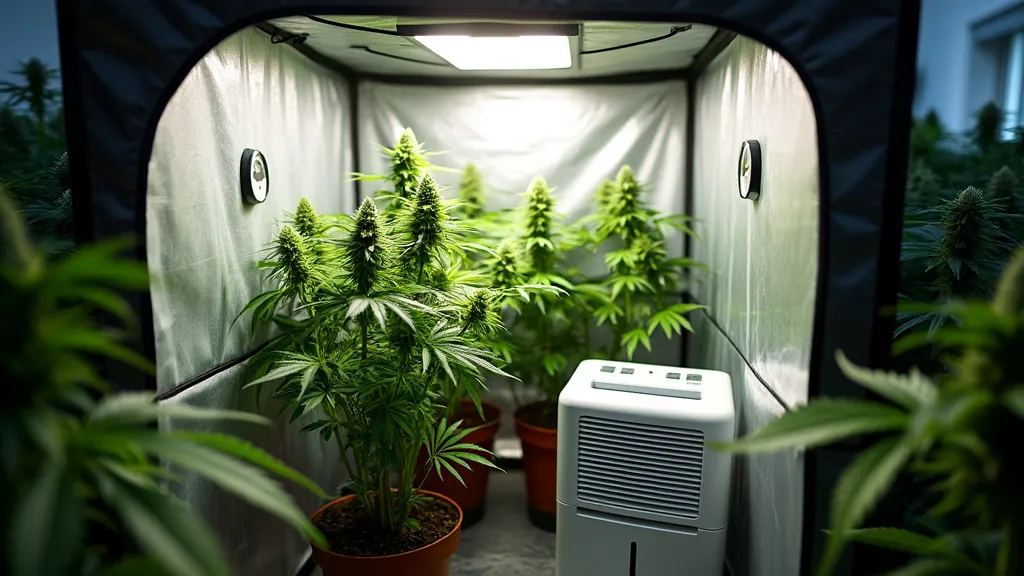
Dehumidifiers in Cannabis Growing
In cannabis cultivation, maintaining the right environmental conditions is key to producing healthy plants and high-quality buds. A grow room dehumidifier helps create a balanced environment by removing excess moisture, preventing mold and mildew, and protecting your plants from pests. By choosing the right dehumidifier for your grow room and following best practices, you can achieve optimal humidity levels and maximize your cannabis yield.
Dehumidifiers not only ensure the safety and quality of your harvest, but they also contribute to the overall efficiency of your grow operation. Without proper humidity control, growers can face a multitude of issues, from poor plant health to diminished yields and even total crop failure. Implementing a dehumidifier into your grow room setup is a proactive step toward ensuring that your cannabis plants thrive in the best possible environment.
Additionally, with the right dehumidifier in place, you’ll be able to focus on other important aspects of growing, such as nutrient management, lighting schedules, and strain selection. By taking control of humidity levels, you remove a significant source of stress for both you and your plants, allowing for a smoother, more productive cultivation process.
FAQs about Grow Room Dehumidifiers
How do I know if my grow room needs a dehumidifier?
If you notice persistent condensation, mold growth, or excessively high humidity levels (above 60%), it’s a clear sign that your grow room would benefit from a dehumidifier. Monitoring humidity with a hygrometer can give you a more accurate picture of the conditions in your grow space.
Another indication that your grow room needs a dehumidifier is plant health issues that seem to occur despite your best efforts in watering, feeding, and lighting. Yellowing leaves, slowed growth, or an increase in pests may all be symptoms of excessive humidity. Addressing these problems with a dehumidifier helps restore balance to the environment, promoting healthier plants and stronger yields.
Cannabis plants naturally transpire moisture into the air, raising humidity levels as they grow. As your plants increase in size, especially during the vegetative and flowering stages, their water consumption and transpiration rates also increase. If your grow room humidity levels start creeping up despite ventilation efforts, it’s a clear indicator that a dehumidifier is needed to stabilize the environment.
Can I use a regular household dehumidifier in my grow room?
Yes, household dehumidifiers can be used in grow rooms, but it’s important to ensure they have the capacity to handle the size of your space. For larger grow rooms, commercial-grade dehumidifiers may be more effective. It’s also worth noting that some household dehumidifiers may not have the advanced controls needed for precise humidity adjustments at different stages of plant growth.
Household dehumidifiers are generally more affordable and can work well for small grow setups or hobby growers. However, they may lack the durability and efficiency needed for large-scale operations or professional growing environments. If you’re growing cannabis on a larger scale, investing in a commercial-grade dehumidifier will provide better performance and control, ensuring that your plants remain healthy throughout the grow cycle.
Another factor to consider when using a household dehumidifier is its ability to handle continuous operation. Many household models are designed for intermittent use and may not be equipped to run 24/7 in a demanding grow room environment. If you’re planning to run the dehumidifier constantly, be sure to choose one that is built for this purpose to avoid potential burnout or failure during critical growing periods.
How often should I run my dehumidifier?
How often you run your dehumidifier will depend on the conditions in your grow room. If humidity levels are consistently high, you may need to run it continuously. However, during drier periods, the dehumidifier may only need to operate intermittently. Regular monitoring of humidity levels will help you determine the ideal operation schedule for your setup.
During certain stages of growth, such as flowering, cannabis plants require lower humidity to avoid mold development and encourage bud development. This means that you may need to run the dehumidifier more frequently or even continuously during these periods. Seedlings and plants in the vegetative stage, on the other hand, generally require higher humidity levels, so you may be able to reduce the dehumidifier’s activity or adjust the settings accordingly.
Many modern dehumidifiers are equipped with built-in humidity sensors and automatic shutoff features, allowing them to activate only when the humidity exceeds the desired level. This can be a significant energy saver, especially during periods when the external environment naturally has lower humidity. It’s also a convenient feature that ensures consistent humidity levels are maintained without the need for constant manual adjustments.
Is there a risk of drying out my plants by using a dehumidifier?
While dehumidifiers remove moisture from the air, they should not dry out your plants as long as they are used correctly. It’s important to monitor humidity levels regularly and adjust the settings on your dehumidifier as needed. If humidity levels drop too low, you can turn off the dehumidifier or reduce its operation time to prevent the air from becoming too dry.
Cannabis plants require different humidity levels at various stages of growth, so being mindful of this when using a dehumidifier is crucial. Over-drying the air, particularly during the vegetative stage, can lead to stressed plants, slowed growth, and decreased nutrient uptake. This is why it’s important to regularly check both your hygrometer and the plants themselves for signs that the air is becoming too dry, such as wilting or crispy leaf edges.
It’s also important to balance dehumidification with proper watering practices. If the air becomes too dry, plants may lose moisture too quickly, increasing their water consumption. By maintaining optimal humidity levels with the help of a dehumidifier, your plants can better regulate water intake and transpiration, ultimately leading to healthier, more vigorous growth.

